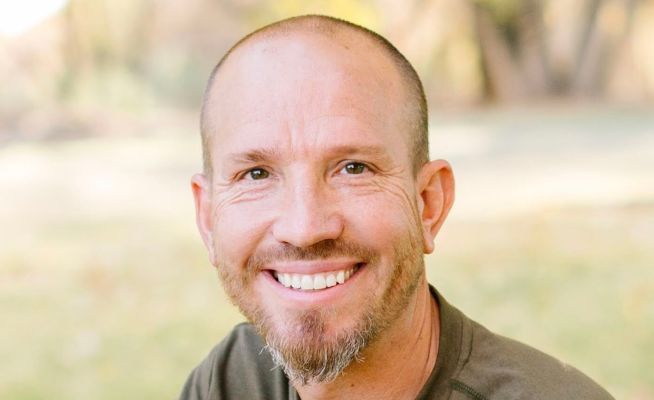SAN FRANCISCO — When Elias Da Silva first started driving for Uber and Lyft three years ago, he could make $250 within eight or nine hours of driving. Now, he said, it takes him 12 to 14 hours to earn the same pay.
David Williams, who lives in Sacramento but spends his weekends driving for Lyft in San Francisco, said he’s seen his earnings drop over the last year by roughly one-fourth of what he was making when he started.
And Fnu, an Indonesian immigrant who would not give his last name for fear of losing his job, said he used to get bonuses of $500 or $600 per week from Uber for hitting a certain number of rides, but that figure has now dropped to around $200.
All three drivers spend their nights sleeping in their cars in a supermarket parking lot in San Francisco, along with roughly two dozen other Lyft and Uber drivers.
As Uber’s stock hits the market on Friday, following Lyft’s initial public offering in March, drivers for both companies say they have been seeing their own earnings fall. In the fiercely competitive ride-hailing market, both companies are battling to keep fares low enough to woo riders and repayment rates high enough to entice drivers, all while returning a profit to investors. Bonuses change from city to city and from week to week, increasing in areas where Uber needs to attract more drivers, a company representative said.
But the result is a maddening game of juggling incentives and trade-offs that often leaves drivers without consistent pay and wondering just how much they’ll end up taking home that day, said Jonathan Nalvarte, who lives in a suburb outside of Los Angeles and drives for Lyft in San Francisco for a week or two at a time. Unlike Da Silva and Fnu, Nalvarte didn’t participate in the international strike on Wednesday, when thousands of drivers turned off their ride-hailing apps to protest low and inconsistent wages, poor working conditions, and the lack of health care and other employee benefits, among other concerns.
Some, like Williams, work in the city only on weekends, while others, like Fnu, who lives in Los Angeles, come for one to two months at a time. Da Silva moved to San Francisco from Los Angeles about six months ago, he said, in search of higher-paying rides. But he can’t afford an apartment in the city, so he beds down every night in his white sedan.
“I came up here because they were paying more money to drive here, and the bonuses were better,” Da Silva said. “But now, they’ve cut the bonuses, too. So it’s hard to make a living.”
The strike was timed in advance of Uber’s initial public offering on Friday and followed similar actions before Lyft’s stock hit the market in March. Uber said Thursday it would set its shares at $45 to start, equal to a valuation of roughly $82 billion, but the company’s shares opened lower than that Friday. Lyft’s stock initially traded at more than $87 per share, but had fallen to $55 as of Friday morning.
Both companies, in public filings, acknowledged the necessary role drivers play in keeping their businesses afloat. Though the companies depend on drivers remaining independent contractors — who are eligible for health care benefits, overtime pay and paid time off — the companies acknowledged that, without maintaining and attracting new drivers, their businesses could easily fail.
Both offered bonuses to drivers ahead of their IPOs. Lyft offered rewards of $100 to $10,000 depending on how many rides drivers have under their belts, while Uber offered bonuses of $500 to $40,000 under a similar schema.
But, placating workers with a one-time cash handout is not the same as consistent, meaningful pay and benefits, said Shona Clarkson, an organizer with Gig Workers Rising, a community of app and platform workers seeking to improve working conditions among on-demand laborers, categories that include Lyft and Uber drivers, but also other app-based platforms, such as Sittercity or Care.com, TaskRabbit or Handy, DoorDash, Instacart or GrubHub.
“Drivers, like all of us, need to have a job that helps them pay the bills and that leaves them time with their families and doesn’t leave them on their own if they are injured or sick,” she said. “Uber’s unstable business model, in which executives are pocketing millions while drivers are sleeping in their cars and eating from food banks, can’t last.”
Lyft reset its payment rates last year in an effort to make wages more consistent and phased out surge-pricing incentives, replacing it with ones based on geographic hot spots, a company representative said. Drivers said both decisions have so far resulted in lower pay.
Lyft said its drivers earn an average of $20 per hour, while a spokesman for Uber cited two studies showing its drivers make between $18.65 and $21.07 per hour. But those hourly rates don’t account for expenses, such as car payments or rentals, gas, cleaning supplies, oil changes and other maintenance costs, not to mention health care and lost wages from taking unpaid time off. Drivers said those costs eat up about half their earnings.
For Sam Tan, a San Francisco resident who drives for Uber and Lyft in his spare time, the job is a great way to supplement his full-time work as an auto mechanic.
“But if you’re trying to make a living,” he said, “it’s really tough.”
Drivers who have other options say they are looking to get out of the ride-hailing business as soon as possible. Williams is working toward getting his commercial license to drive big-rig trucks, he said. Nalvarte is hoping it won’t be long before he can finish the classes he need to get his electrician’s license.
“And then I’m done with driving,” he said.
But for others, like Fnu, getting out of the ride-hailing industry is more difficult. Fnu worked in restaurants for nearly a decade before driving for Uber and Lyft, the only two types of jobs he’s had in this country. He’s not eager to go back to restaurant work, but isn’t sure what other industry would hire him.
Da Silva had been a taxi driver before Uber and Lyft came along and he saw his customer base dwindle. When he was a taxi driver, Da Silva was able to afford a small apartment in Los Angeles, he said. He worked around eight to 10 hours each day, five days a week. Now driving for Uber and Lyft, Da Silva says he hasn’t had a single day off in five months. He starts driving every morning around 8 a.m. and finishes close to midnight.
“I don’t have a life anymore,” he said. “But what can I do?”
Then he added: “Maybe go to New York City. I read on Facebook they pay you $1 per mile out there. Here, they pay you 68 cents.”
“Maybe I can make more money for less hours,” he said.










